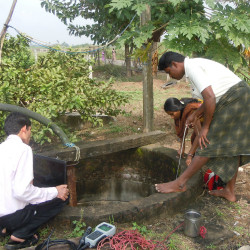Enhancing water treatment systems in India
The SAPH PANI(opens in new window) (Enhancement of natural water systems and treatment methods for safe and sustainable water supply in India) project built on a combination of local and international expertise to enhance water resources and water supply, especially in water-stressed urban and peri-urban areas. To achieve its goals, the researchers worked to strengthen scientific understanding of the performance-determining processes occurring in the root, soil and aquifer zones of targeted regions. They also considered the removal and fate of important water quality parameters such as pathogenic microorganisms and respective indicators, organic substances, nutrients and metals. The consortium also studied BF, MAR and natural treatment systems (NTSs) technologies in nine sites in different parts of the Indian sub-continent. SAPH PANI established a good understanding of bank filtration performance as a function of operation and design. The technology's applicability was extended through flood risk assessment and development of flood-proof designs and other measures. Potential new BF sites were identified, as their characteristics were outlined. MAR performance was reliably quantified following field results and modelling. Project work provided new insights into and enriched hitherto limited data on MAR influence on quality. A complete inventory of Indian public NTSs for wastewater treatment was performed, and 41 structures representing 5 different technologies were analysed on site. Pilot trials on constructed wetlands will support planning and designing of NTS structures for wastewater treatment, including post-treatment to enhance potential for recycling and reuse. Recommendations for pre- and post-treatment options for different uses were also produced. Targeted assessments of various factors resulted in recommendations and sustainable business models. One example is NTSs for wastewater treatment managed by local communities. This will provide both irrigation water and fodder for cattle, and thus boost income. Project members published about 30 articles in scientific journals and produced the 'Saph Pani Handbook', which presents an overview of the most important findings and striking success stories. The project website, newsletters, leaflets for the general public, targeted courses, practitioner meetings and over 40 events were used to disseminate project information. The undertaking culminated in the SAPH PANI final conference, attended by the Indian Minister of Water Resources, over 100 invited scientists, and senior-level policy and decision makers.







